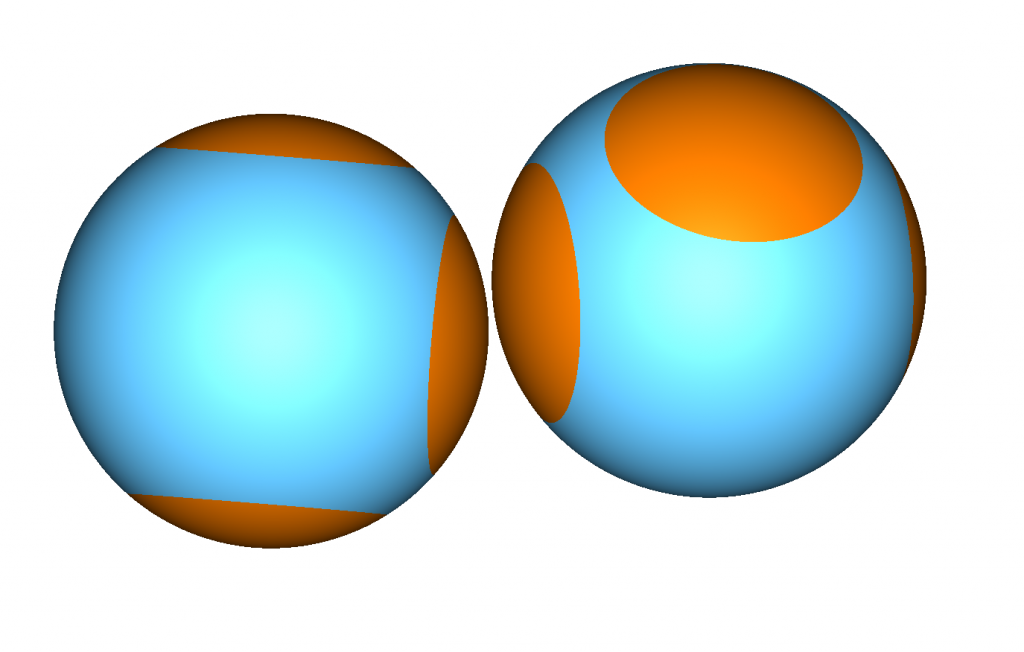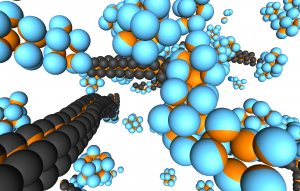The research topic of my post-doc at the Sapienza University of Rome was on computer simulations of `patchy colloids’. These are particles that have distinct spots on their surface where they can form highly directional interactions. For example, particles can attract each other at the places where the patches are located (see figure below).
 Patchy particles are useful, since they can be used to create materials that can not be realized using particles with isotropic interactions. Nowadays patchy particles can be synthesized in the laboratory. That means that simulations can be used to explain experimental findings, or used as inspiration to make new materials in the real world, such as the wire-like structures in the figure below.
Patchy particles are useful, since they can be used to create materials that can not be realized using particles with isotropic interactions. Nowadays patchy particles can be synthesized in the laboratory. That means that simulations can be used to explain experimental findings, or used as inspiration to make new materials in the real world, such as the wire-like structures in the figure below.
Simple patchy particles, such as spheres with patches on their surface, can be employed to explain the physics in more complicated interactive systems such as colloidal clays. There is still a lot that we do not know about patchy colloids regarding the role of the patch geometry, shape, size, the type of interaction potential, and the number of patches on the structures that can be formed. Currently, we are trying to predict ordered structures of various types of patchy particles, including crystals. We determine their stability using Monte Carlo simulations, free energy calculations, cluster size distributions, and thermodynamic integration schemes. Below are a few images from computer simulations, depicting structures of spheres with only one attractive patch.
During the project, we calculated out the full phase diagram is calculated for Janus particles , and have evaluated the stability of tubular and lamellar structures.










